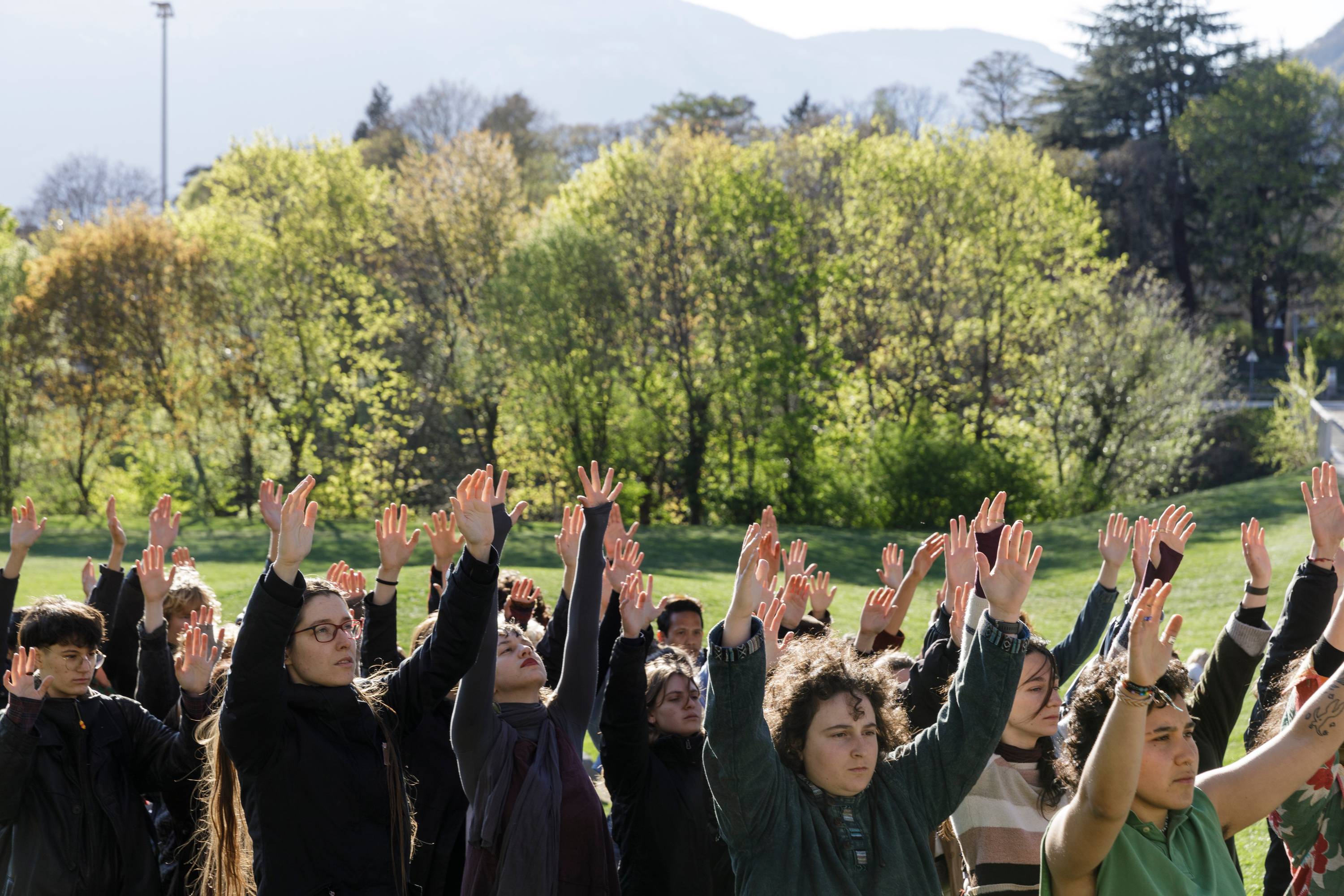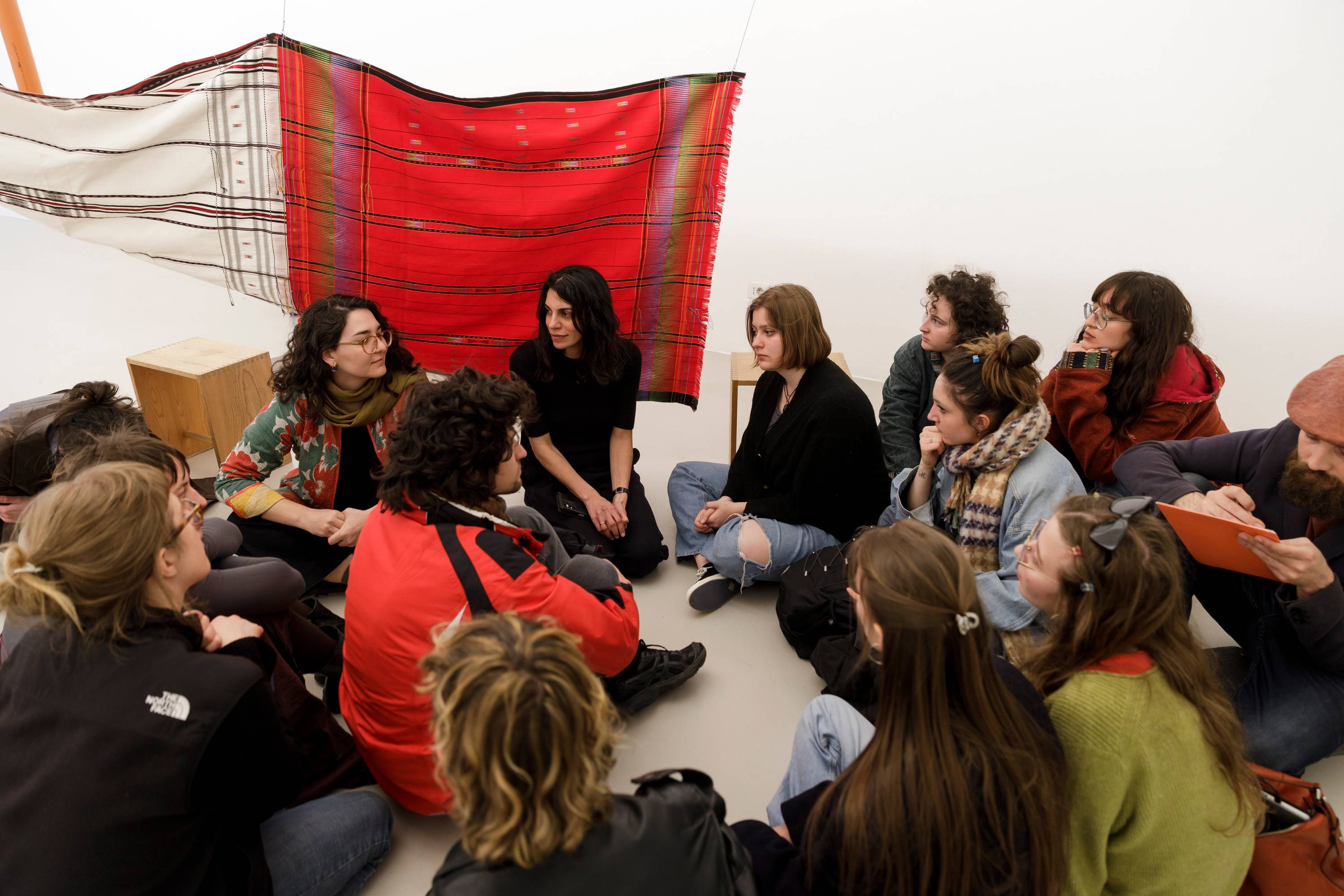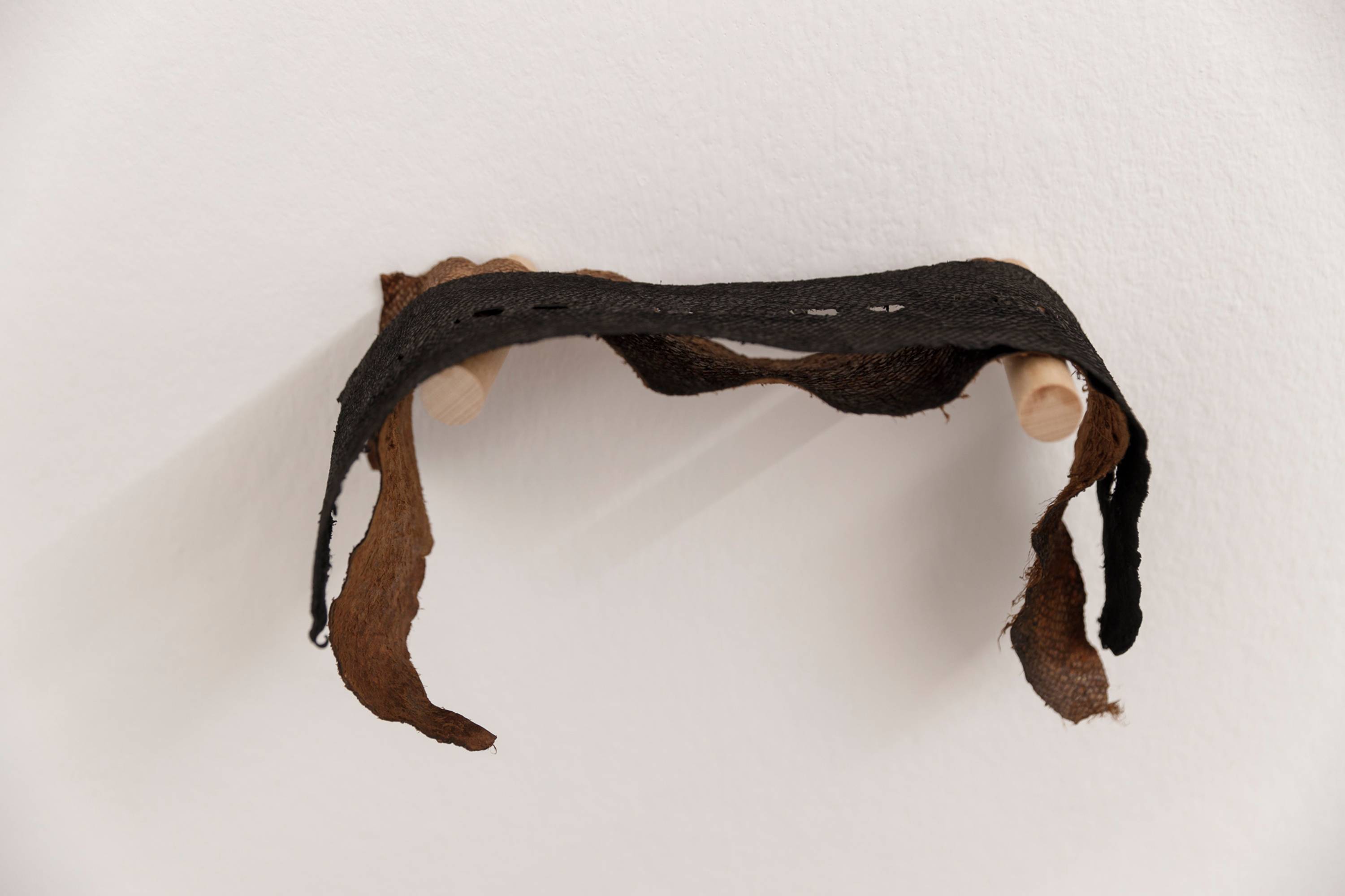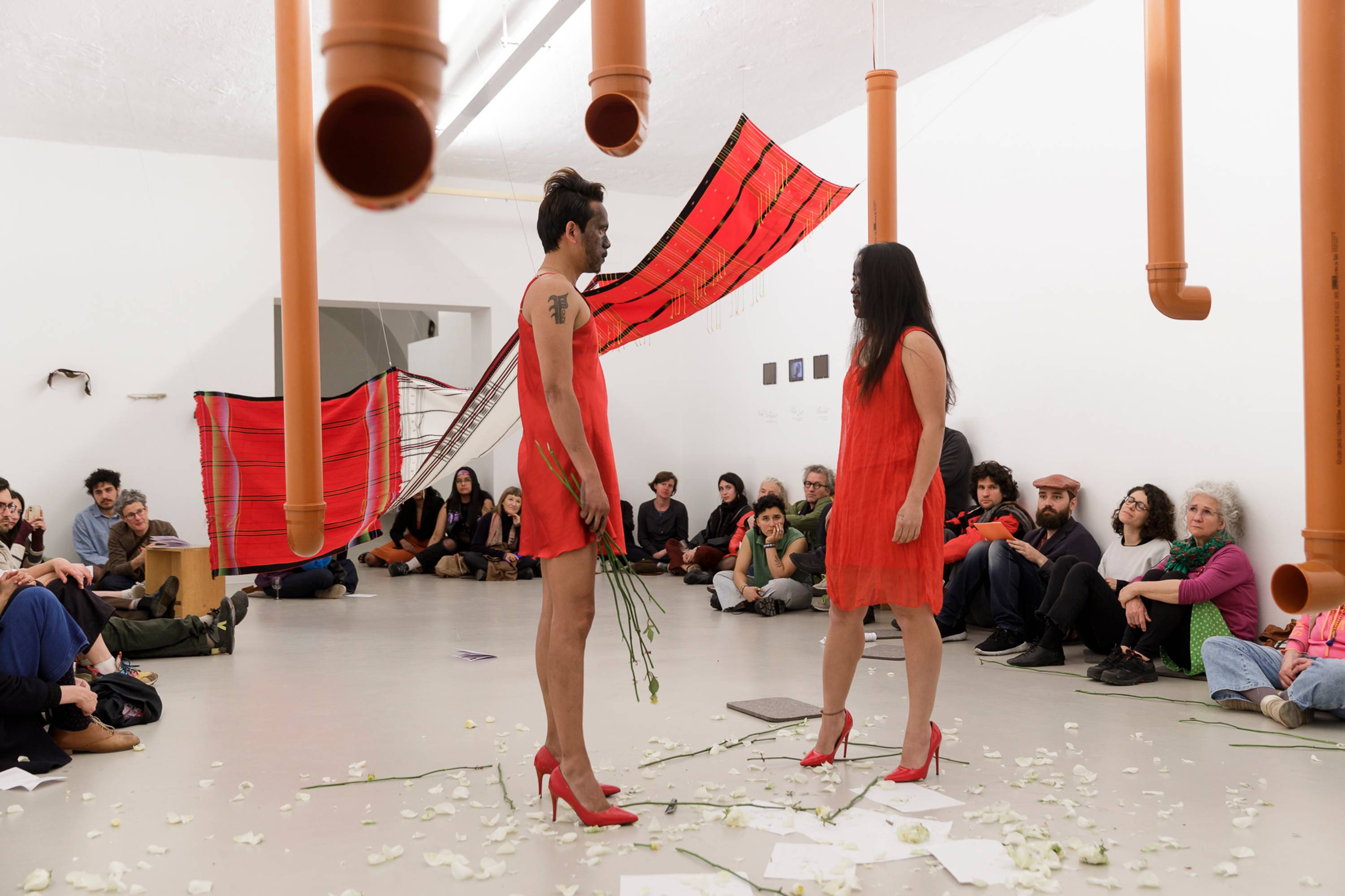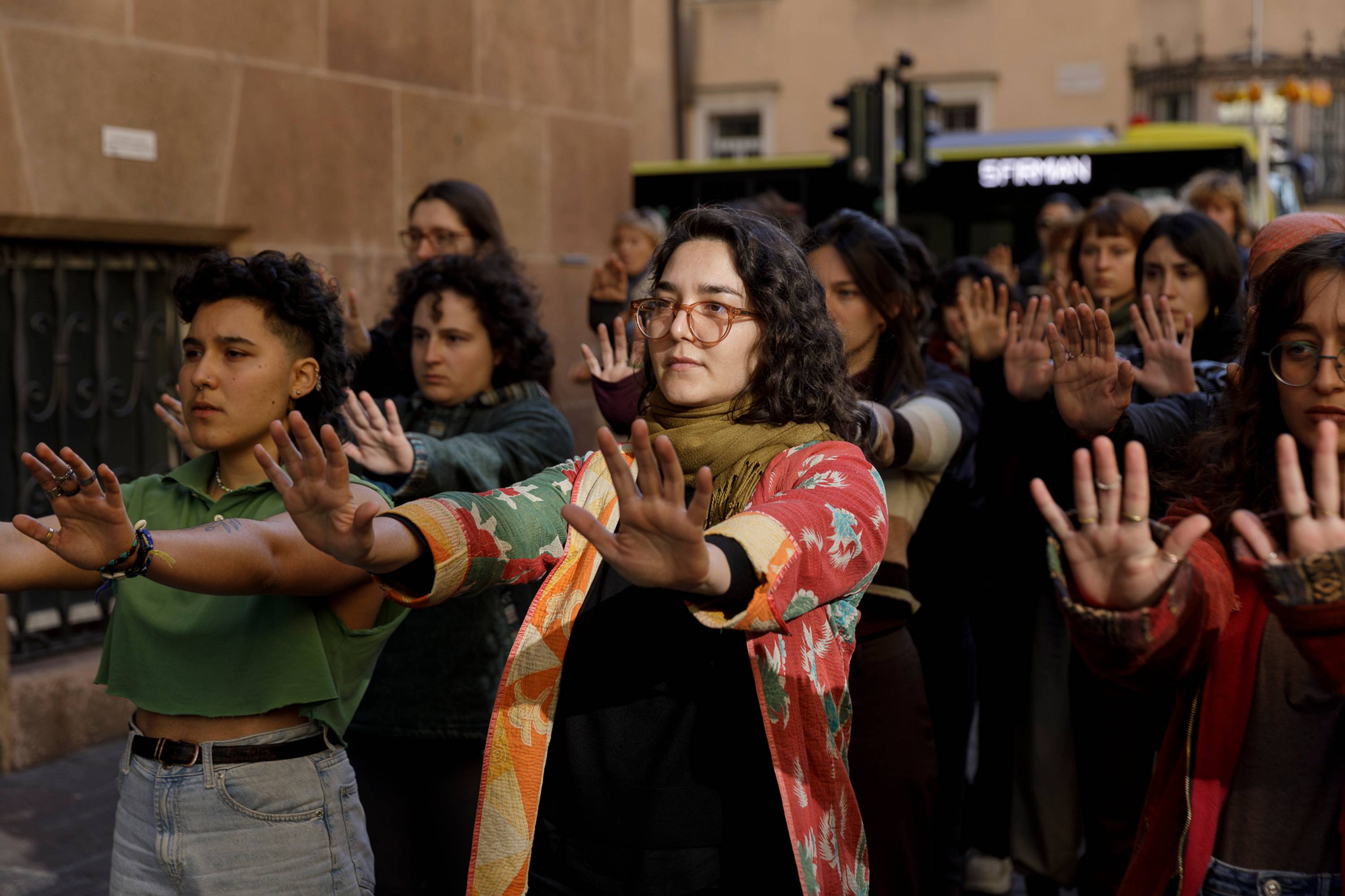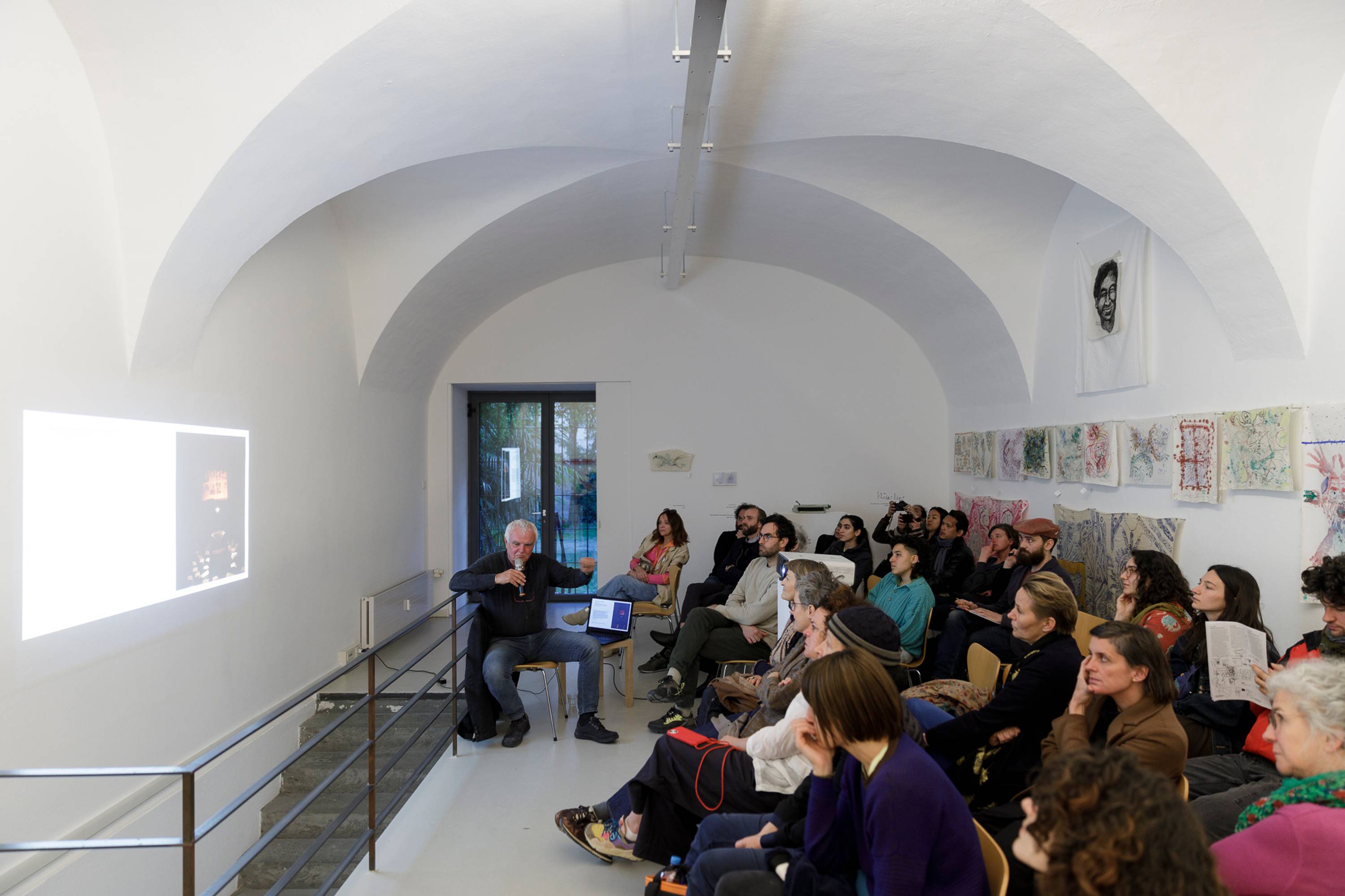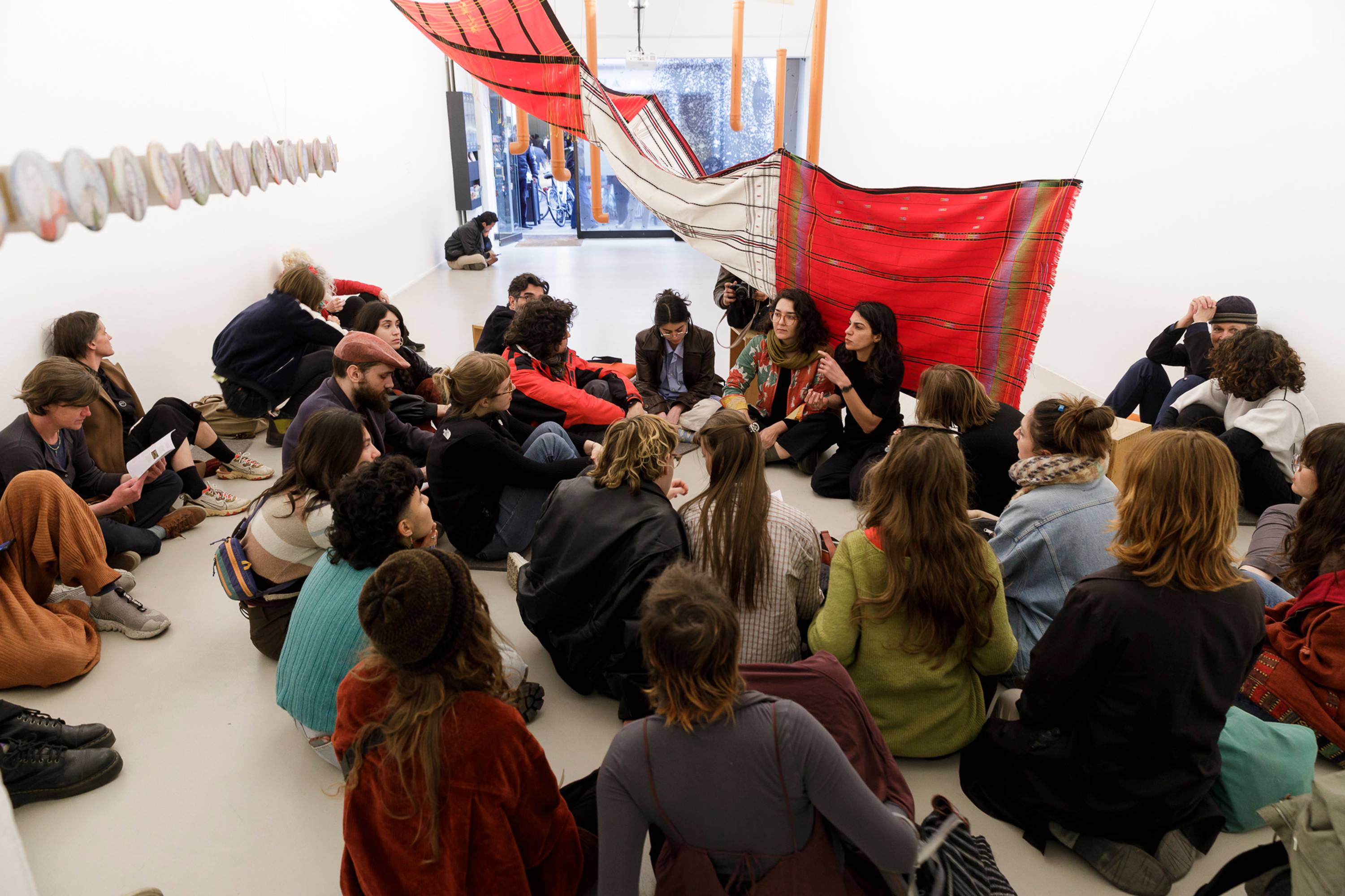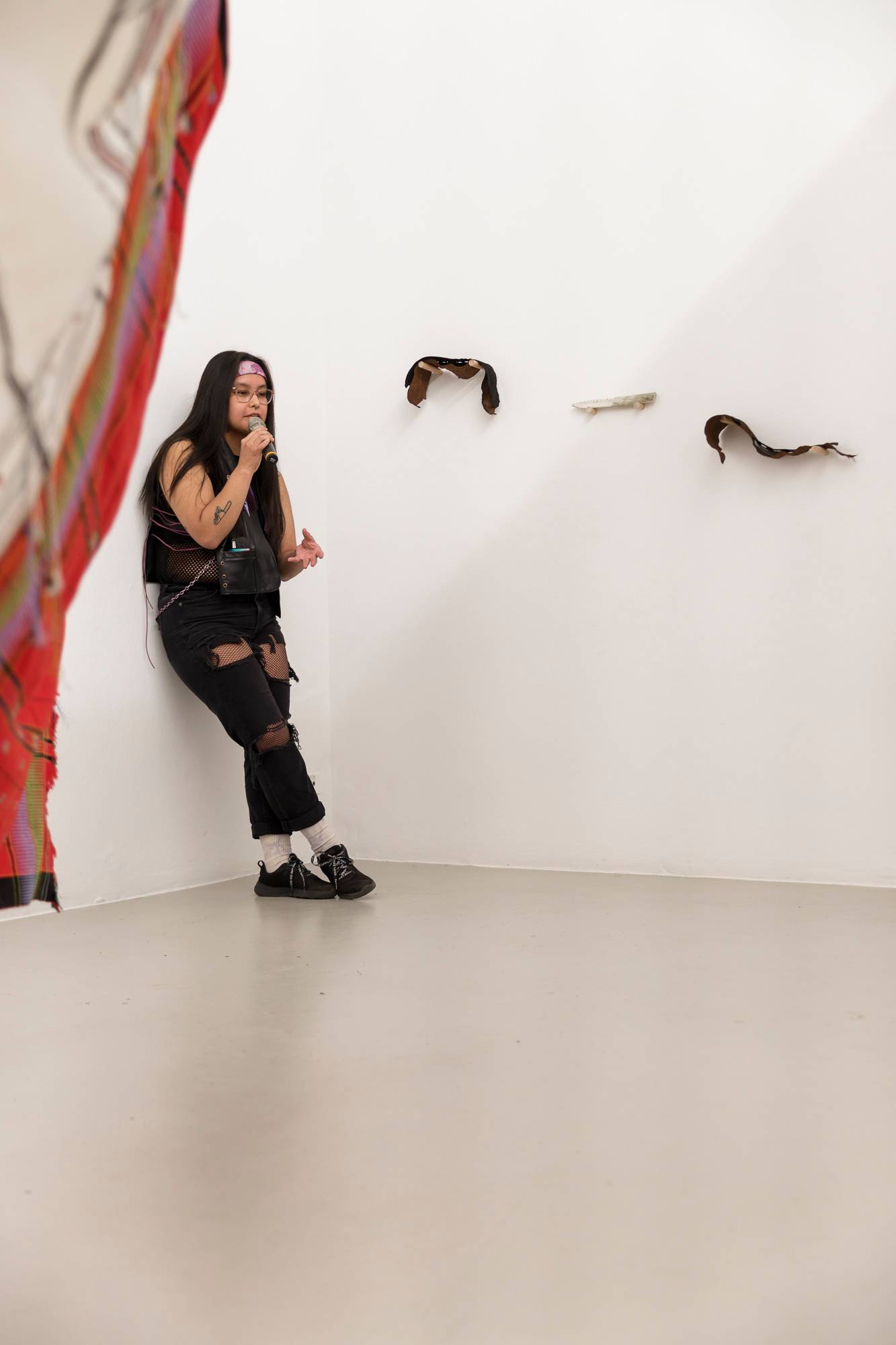THE SCORCHED EARTHLY. A SIT-IN
OCCUPIES THE EXHIBITION ‘DIE FLIEGE IS A FLY IN VOLO’
Curated by Zasha Colah, Francesca Verga and Valentina Viviani
04.04.2023
17:30 h The Missing Forest by Poly Marchantia, a 45-minute performative-walk begins here, near Talvera bridge
18:30 h Scorched Earthly. A Sit-in opens at Ar/Ge Kunst
19:00 h Franz Xaver Augustin, 45-minute talk in German
20:00 h Crimson Conquest, Yadanar Win and Ko Latt, 20-minute performance
20:30 h Valeen Jules performance
Arbeitsgemeinschaft (Working group): Chaw Ei Thein (artist, Yangon, 1969), Soloman Chiniquay (artist and filmmaker, xʷməθkʷəy̓əm, Sḵwx̱wú7mesh, səl̓ilwətaɁɬ territory and Treaty 7 territory), Valeen Jules (artist, poet and birthworker, Nuu-chah-nulth and Kwakwaka'wakw nations), Desmond Kharmawphlang (poet, Shillong, 1964), Ko Latt (artist, Yangon, 1987), Arkotong Longkumer (anthropologist, Kohima, Nagaland), Saviya Lopes (artist, Vasai, 1994), Poly Marchantia (artist, Milano, 2020), Nge Lay (artist, Pyin Oo Lwin, Mandalay region, Myanmar, 1979), Zamthingla Ruivah (artist and songwriter, Ukhrul, Manipur, 1966), Yadanar Win (artist, Yangon, 1987), Sawangwongse Yawnghwe (artist, Shan State Burma, 1971)
The Scorched Earthly considers the use of the scorched-earth policy—and the many forms this military manoeuvre has taken up until the present—in terrains largely describable as either unceded or ungovernable. The highlands of north-eastern India and Myanmar (known as Zomia) and lands of the First Nations (especially the unceded territories of British Columbia in Canada) bear oralitures that describe routine scorched-earth intentions. These terrains are fused with recent protest sites, whose suppression has involved manoeuvres that may be described as scorched-earth.
Taking the form of a sit-in occupying the exhibition Die Fliege is a fly in volo, this acoustic archive sings of pacific protests and resistance barricades that occupied or reclaimed city-streets, highways, and forest groves by enacting earthly communities against the militarization of territories, the forced disappearance of world-founding spiritual practices, and the extraction of vital forces.
The Scorched Earthly accentuates poetic voices and artistic actions from terrains connected by their bearing and desisting of scorched-earth manoeuvres. The archive connects narrations of buffalo slaughter in British Columbia; songs of burnt forest land, Gaidinliu's coming of the heraka, the Black Priestess's reanimating a sacred forest in Zomia; and the action In Defence of the Native Forest in Córdoba-Argentina; with the human barriers during the Chipko movement, the occupation of a national highway through Shaheen Bagh, and the farmers' protests in India; the Fairy Creek Blockade in British Columbia; and the htamein barricades from Yangon Artists' Street in 2021.
The Scorched Earthly, gathering new commissions, sound recordings, and objects associated with the oral tradition, will evolve into a research archive on the infrastructure of disobedient, ungovernable terrains to be housed at 221A Vancouver.
Its first activation at Ar/Ge Kunst takes the form of a sit-in/ sound-sculpture, inhabited and traversed by three performative commissions. The formation is composed of weavings designed by Zamthingla Ruivah. The composition of the audio archive is arranged by Carlo Barbagallo (musician, Syracuse, 1985).
The Scorched Earthly is a fellowship project supported by 221A, Vancouver. It was commissioned with Jesse McKee, Head of Strategy, and Tao Fei, Producer, Strategic Initiatives. Funding for this project was provided by the Province of British Columbia’s International Presence Program. 221A works with artists and designers to research and develop social, cultural and ecological infrastructure. More at: 221A
The Missing Forest, a walk
The walk begins here, near Talvera bridge
The missing forest extends a thread between the Chipko Movement (India, 1970s) and a protest In Defence of the Native Forest in Córdoba (Argentina, 2017), focussing on the choreography of bodies hugging trees as a form of peaceful protest against deforestation and the choreography of bodies enacting the no-longer-living forest as a choreography of bodies remembering. With the aim to contemplate forms of protection and resistance, the choreography is about memory as something that transcends intellectual thought, memory that is written with and by the body itself—connecting to the idea of muscle memory. The research takes the form of a collective action, made of a walk and gestures, that seeks to evoke—through the gestures of the above-mentioned protests—the memory of the missing forests.
—Text by Poly Marchantia
The Political Background of Contemporary Art in Myanmar
Franz Xaver Augustin, director of Goethe Institute in Yangon from 2014 to 2019, will give a short introduction to the political background of contemporary art in Myanmar. The talk will describe the socio-political conditions under which Burmese artists work and live before and after the military putsch of February 2021, with special reference to the art of Htein Lin.
Crimson Conquest performance
Due to life-threatening situations and growing civil conflict with the military government in Myanmar, people, especially political activists, have been leaving their homes and land. Even if people stand on the side of Justice, there is no significance to that word any more. Many known and unknown faces gave their bodies to the revolution. The performance Crimson Conquest uses flowers and poems dedicated to the sacrificed lives of Spring heroes, crying mothers, detained sisters, and friends. It’s a way of dancing with them while we fight.
—Text by Yadanar Win and Ko Latt
Performance-poem
Valeen Jules have been seeking the knowledge of how to make, work with, and treat fish-skin leather, contained in the oraliture of their ancestral lands of the Nuu-chah-nulth and Kwakwaka'wakw nations. Their performance-poems sing out the amnesia and disjuncture of scorched-earth policies on their lands, and the leather sculptures are orality-objects that testify to transmission and a continuum of resistance.
Image: 'In Defence of the Native Forest', protest organised by CoDeBoNa (Coordinadora en Defensa del Bosque Nativo) Córdoba, Argentina, March 2017. Photo copyright: Colectivo Manifiesto.

